Every once in a while, we get that question that we forget still exists: what is the third generation Indische Nederlanders — am I an Indisch 3.0 or not? We’ll get into these questions. However, since there is much more to the third generation than a definition, we will share some of our observations with you, in the week preceding our anniversary-kumpulan on May 11, 2012.
We have written about this definition-issue before. Two years ago, to be exact. However, these questions keep coming back, and from both sides of the Atlantic. Therefore we have decided to blog about it again – but this time in English. Before we get into this complex matter, we have to warn you: this post is longer than we usually publish.
Generation Indisch 3.0
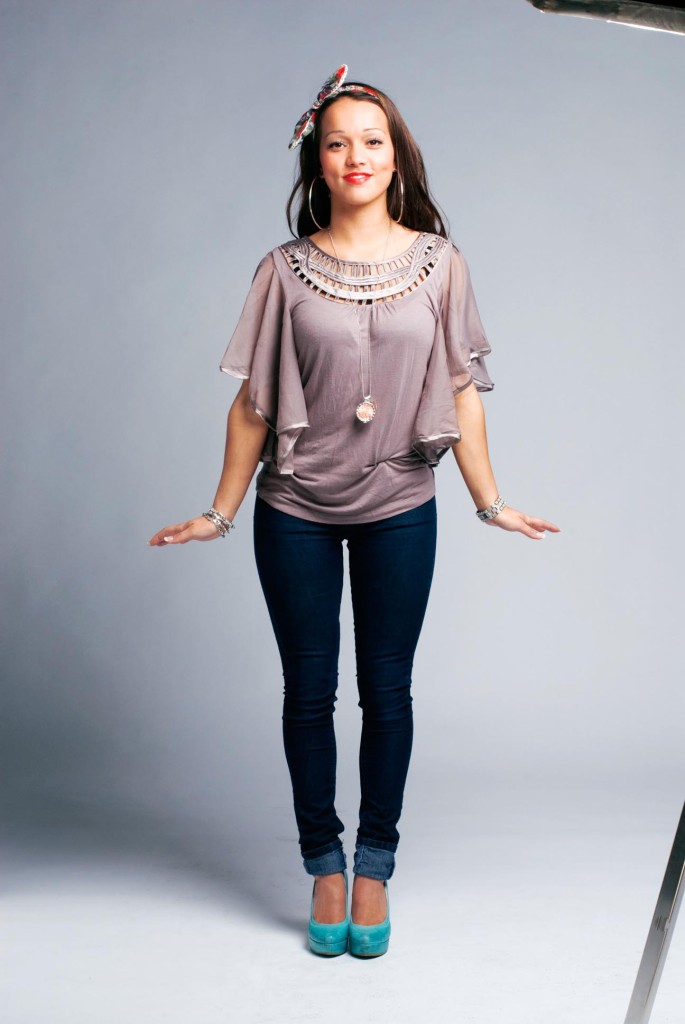
Tv-personality Bibi Breijman, generation Indo 3.0 and "Hagenees". (c) Armando Ello/ Indisch3.0 2011
The generations we refer to are not the same as family generations, but are defined by the moment of migration. Simply put, generation Indisch 3.0 are the grandchildren of the inhabitants who left Nederlands-Indië as adults. The “1.0’s” are the people who came to Holland (or Canada e.g.) as grownups.
However, and this might be confusing, if their parents were still alive, they were 1.0 as well. So both grandparents and greatgrandparents of a 3.0, are part of the first generation. Many of this generation worked hard to be accepted as normal Dutch citizens (or:assimilated).
Generation Indisch 3.0 are the grandchildren of the inhabitants who left Nederlands-Indië as adults
The children that were born to the 1.0’s are the 2.0’s. Some of them were still born in Indonesia (or even Nederlands-Indië). Any child that was younger than 16 when it “repatriated” to the Netherlands, may be considered as 2.0. In the Netherlands, you might notice minor competitions between people of this generation when it comes to their place of birth: “I was born in Indonesia, how about you? (continuing with noticeable triumph) Ah, you were born in Amsterdam. ” This generation either let go of their Indo-roots when they noticed how much stress and pain the topic of Nederlands-Indië caused, or embraced it, starting in the 80’s.
Currently, most of the 3.0’s range in age from roughly 15 to 45 years old. There is competition here as well: “Are you a 3.0 of one or two Indisch parents? (continuing with equally noticeable triumph) Well, both my parents were born there.” By the way, that is ‘worth’ more than two parents who are both 2.0, but were born in the Netherlands.
“Are you a 3.0 of one or two Indische parents? Well, both my parents were born there.”
Indische Nederlander
An Indische Nederlander is someone who has roots in the former Dutch colony Nederlands-Indië and considers himself an Indische Nederlander. That addition sounds self-evident. However, a lot of Moluccans, who could be considered Indisch, don’t consider themselves as such, so who are we to say they are? People that do consider themselves Indisch are Indo’s, peranakans (of Chinese descent), belanda hitams (mixed with African roots) or even a 100% Dutch person (“totok”). Papua’s are the indigenous people of New Guinea and consider themselves Indisch, when they have an Indische parent. Also, we need to say, for the record, that Indisch, in this context, has absolutely nothing to do with India. Nothing.
For the record, Indisch, in this context, has absolutely nothing to do with India.

former minister of Foreign Affairs Ben Bot, is a totok. Foto: http://www.volzin.nu/images/stories/bot.jpg
By now, some of you are staring at your screen, slamming your fist on your desk, shouting: “That is not true! My mother/grandmother/opa/etc was both Indo and Indisch, but didn’t consider himself neither Indo nor Indisch.” Yes, you are right, we know that. That denial is part of our cultural baggage too. However, when they tell you where they were born, most of them will say Nederlands-Indie/ the Dutch East Indies, whereas most Moluccans will say they were born in the Mollucan island group. It seems like a small difference, but the consequences are huge.
The big difference between totoks and other Indische groups, is their ethnic background in relation to their current homeland. Totok-children and grandchildren usually consider themselves Dutch (or any other nationality that applies to your country of residence). That does not always apply to descendants of Indo’s, peranakans and belanda hitams in the same way. Most of them notice that they are not like the Dutch or any other white community.
In today’s world, in urban day-to-day life, knowing what ethnic group you belong to, becomes more and more significant. With all these etnic minorities in the Western World, more often than not, children with Indo, belanda hitam or peranakan roots use their heritage to shape and define their identity.
Most of them notice that they are not like the Dutch or any other white community.
Indo
Let’s end with a second basic term: what is an Indo? First off, an Indische Nederlander is not the equivalent of an Indo: not all Indische Nederlanders are Indo and not all Indo’s are Indische Nederlanders. An Indo, in the context that we use it, is short for an Indo-European; someone with both European and Indonesian roots.
An Indo, in the context that we use it, is short for an Indo-European.
There are some technical challenges and urban legends (or misunderstandings, if you will) to the term Indo. Firstly, we have noticed that Indonesians sometimes call themselves Indo as well, as an abbreviation for Indonesian. That’s up to them, but it’s not the Indo generally referred to in relation to the former Dutch colony.

Griselda Molemans, part belanda hitam. (c) Tabitha Lemon/ Indisch 3.0 2012.
Also, more and more we read online that Indo comes from an acronym: In Nederland Door Omstandigheden (or: Opa)*. Sorry to tell you, but that is not true. That is an urban legend or a broodje aap-verhaal. There is no other way to put it. We have no clue who came up with that (in-) famous acronym for INDO, but we can assure you that the term Indo existed way before the Indo’s came to Holland. To be called Indo was an insult for many decades, starting somewhere in the early days of the Dutch East Indies, as many of you know.
A ‘technical challenge’: an Indo could have been born in Indonesia in the 1950’s, but may also be born tomorrow in Holland, or the US for that matter: when a person of European descent and a person of Indonesian descent have a child, an Indo is born.
The term Indo existed way before the Indo’s came to Holland.
Some say that Indo-European, in its bare essence, refers to a person born anywhere south of the river Indus and has both Asian and European roots. We don’t know how helpful that statement is, considering that in that case, a child born in the Phillipines could also be called Indo. That would become quite confusing. And this stuff is confusing enough already, right?
A short summary, to make sure you are not totally confused by now: an Indo is someone of both European and Indonesian descent, born anywhere in the world, 50 years ago or tomorrow. An Indische Nederlander is someone with family roots in the former Dutch East Indies. And a generation Indisch 3.0 is the grandchild of the Indische migrants who left Indonesia as adults. And then there are a lot of misunderstandings and confusing elements.
Observing the third generation

Generation 1.0. Imagesource: http://repatrianten.watishet.info/
We certainly hope we have been able to explain the basic terms clearly enough. And we hope you have noticed our somewhat sarcastic undertone: definitions are not what makes us who we are. We are who we want to be. Not all 3.0’s want to be third generation Indisch; they no longer feel connected to their heritage and thus to us. We, as Indisch 3.0, hope to at least stop and perhaps even change this, by making visible how many famous and not-so-famous-yet Indo’s there are around the world and by encouraging 3.0’s to at least accept and hopefully handdown their roots to their children.
That the third generation Indische Nederlanders is more than just a definition, we will show in our anniversary week starting May 8th. We will publish our observations, based on being out there for four years. Are there any specific questions? We don’t have all the answers, but four years of active blogging will take us a long way.
*In Nederland Door Omstandigheden (Opa) means: In the Netherlands because of circumstances (or: because of grandpa), referring to the involuntary nature of the migration to Holland.

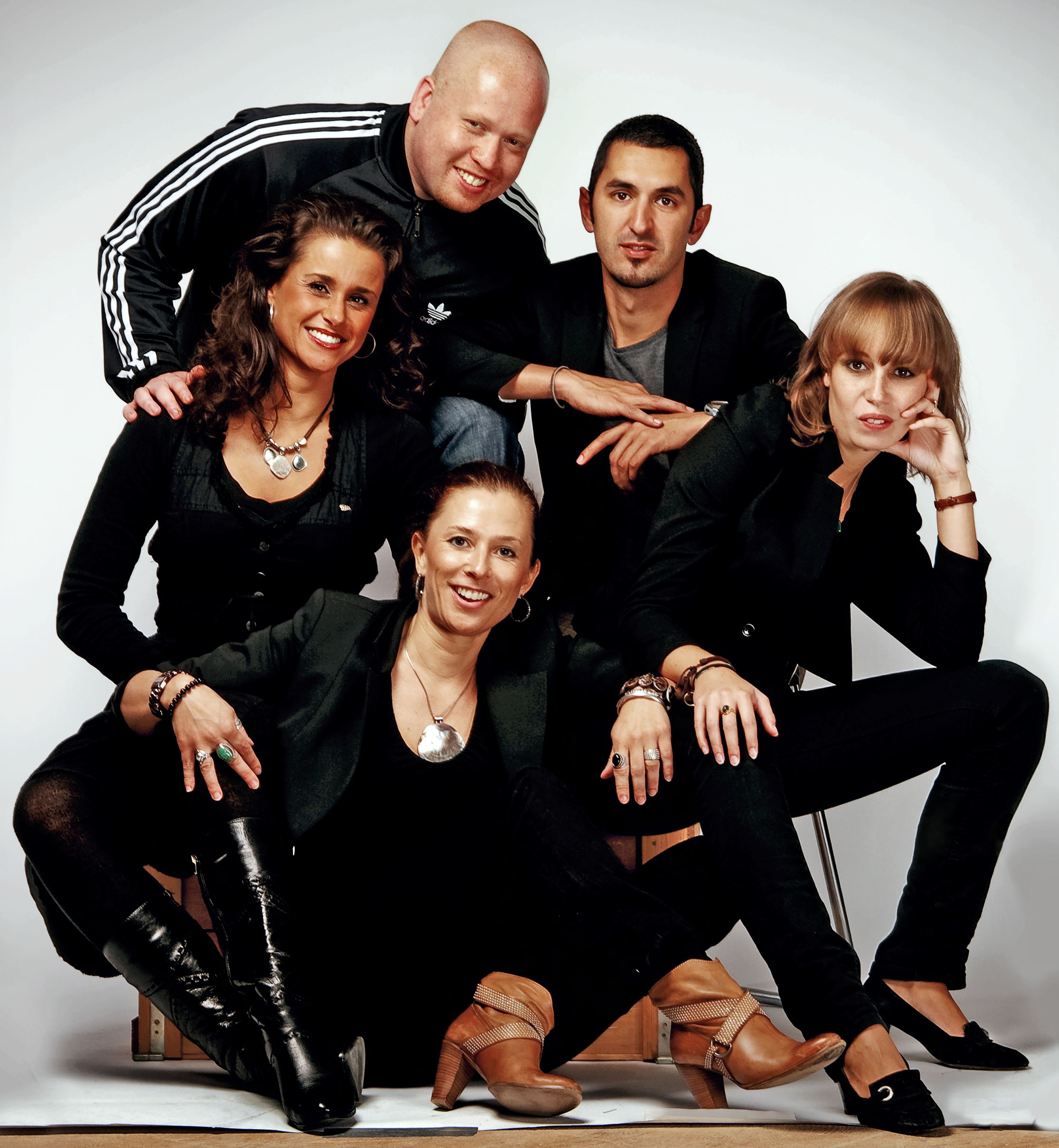
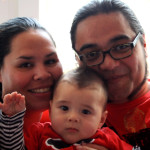
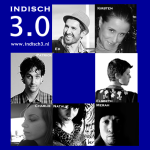
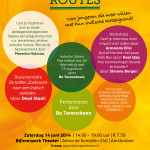
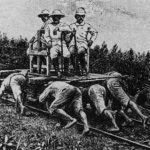

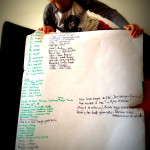
INDO: In Nederland Door Omstandigheden or Opa is ofcourse a Monkey-in-a-Sandwich-Story made up by people who shook that out of their Monkey sleeves. 🙂
“definitions are not what makes us who we are. We are who we want to be.”
I share this sentiment, even if the preceding paragraphs contain both points I agree with and points I disagree with.
One single thing I’d like to say here, is that numbering generations starting from the people who came here as immigrants, is a very Dutch thing to do. Americans (who probably make up the majority of the English-speaking Indo audience this blog post is addressed at) don’t seem to count the children of immigrants as ‘second generation [Chinese, Pakistani, Swedes, Cubans etc.]’, but as first generation American citizens. That’s the difference between the US and the Neth on this issue. Over here, they see brown skin or slanted eyes or a hook nose, and they’ll ask you “Where are you from?”, meaning ‘which country’ even if both your biological parents grew up in, say, Utrecht.
While I’m an avid follower of this blog, I’m not all that keen on the term ‘third generation’, because of the implication that the generation that came over from Indonesia is the sole starting point of everything Indo. I consider my mother’s generation and the generations that came before my grandparents as important to my personal history, family history, and cultural history, as the generation that lived through the War, the bersiap, Soekarno’s presidency, and eventual settlement in the Netherlands and other parts of the world.
Nevertheless, I think this article does clear up a lot of confusion to those who were wondering, even if, as I said before, there are some points on which I don’t agree. Maybe we can finally settle this whole ‘What is Indo/Indisch’ thing once and for all, and move on from there.
Hey Cj, tnx for your appreciation! Glad to hear you support the purpose of this article.
I (Kirsten) totally agree with you when you say: “I’m not all that keen on the term ‘third generation’, because of the implication that the generation that came over from Indonesia is the sole starting point of everything Indo.” I have at times gotten real angry over the fact that we let ourselves be defined by our migration, not solely by our roots. However, the term is so “ingeburgerd” (how on earth do you translate that??), that I have accepted that premiss.
With regards to “over here, they see brown skin or slanted eyes or a hook nose, and they’ll ask you “Where are you from?”, meaning ‘which country’ even if both your biological parents grew up in, say, Utrecht. “, I have to agree and disagree. Yes, maybe the migrants in the US themselves don’t count the generations (are you sure about that?), but I know from experience that migrants themselves ask you where you’re from. You might be right about the “caucasian” Americans, but the non-whites certainly ask. And they don’t mean Holland. When I asked them about their origin, they also proudly shared with me that they were from all over the world (I don’t remember the countries anymore, it was a while ago). Or maybe they only ask girls? Haha. I wouldn’t know about that!
In pratical sense ofcourse almost every American (except for the Native Americans) are immigrants. I have travelled extensively to the US and it was always entertaining when people started talking about their origins. One time I ended up at a Christmas party of 5th generations Polish Americans. Not one of them spoke a full sentence Polish but their drinking that night sure was….
Als mensen liever in het Nederlands willen reageren, dat kan natuurlijk ook gewoon!
quote—————This generation categorically denied for decades that they had any other ethnic origin than European ————–quote
Kirsten, this is not true.There was a tendency to feel ashamed and to ‘forget’ the native origin.But I’ve never seen a denial from people who where mixed in their face-features. The mother of Wieteke van Dort didn’t knew about a native origin, herself or her husband van Dort, so she said to Wieteke there was no Indonesian ancestors in her line. Nobody told her this familyhistory, perhaps she want ‘to forget’ . If people do seems to be totok there was some denial, kind of denial
—
Kirsten, this is not true.There was a tendency to feel ashamed and to ‘forget’ the native origin.But I’ve never seen a denial from people who where mixed in their face-features. —
Boeroeng, there were exceptions, and nowadays it’s different, sure, but the stories from way back, of hidden pictures of njai’s and “Italian descent” are numerous. And I have, by the way, seen denial from people who had mixed features. Not only did he deny his native origin, but he persisted in being Dutch. I understand, of course, it was their survival mechanism. It took me a long time to understand that.
The italian descent , like van Dis said he was told about his father ?
Yes…. his father could be european totok and if his father heard nothing about an indonesian origin in his familyhistory, the denial seems eminent.
Still…- besides your examples- you can’t say the first generation Indische Nederlanders were in denial.
It is not true and it is a bit offence.
let’s see, one of the reason I’m ambiguous to my Indo identity is due to the fact that I dont speak dutch. my oma spoke fluently, my mom and her sister spoke randomly, though only basic conversation while I know handful greetings and vocabularies, my german is actually better.
do you think it’s necessary for new generation Indo to study dutch so they could conform their cultural identity?
“This generation categorically denied for decades that they had any other ethnic origin than European and had to work twice as hard to get accepted (or:assimilated).”
Wat is dit toch met die ‘3e generatie aanname’ over het ontkennen van de etnische origines door de eerste (en tweede) generatie?
Als je het woord “categorically” gebruikt dan ga je wel iets verder dan dat het ook voorkwam of iets van dergelijke strekking, het impliceert dat het de overheersende gewoonte van de ‘gemeenschap’ was. Je hoeft het niet van me aan te nemen maar voor Indo’s, Indische Nederlanders of welke aanduiding je voor deze groepen nog meer voor handen hebt die zijn opgegeroeid in de jaren vijftig tot en met tachtig van de vorige eeuw is het eerder zo dat ze zich heel nadrukkelijk als zodanig hebben geprofileerd. Ze konden ook helemaal niet anders want ze waren over het algemeen visueel ook volkomen ‘anders’. Of het te maken heeft met kijken met een bril van de jaren negentig en de laatste twaalf jaar van deze eeuw weet ik niet maar het lijkt wel of de derde generatie geen flauw benul meer heeft van de verhoudingen in dit land vanaf de jaren 50 tot en met 80. Geen benul van het ‘hollandse’ perspectief en ook niet vanuit het Indische, laat staan de sociale verhoudingen waaronder ze leefden in Nederlands-Indië.
Wat is dan Indisch of Indo? is er een blauwdruk voor gedrag en houding waaraan je minimaal moet voldoen om je waarachtig onder de ‘erkennende’ te kunnen scharen. De familie van mij moeders kant organiseerd in mei een familie reünie. Dan komen uit het hele land ruim honderd ‘etnisch gemengden’ verdeeld over vier generaties samen die allemaal doordrongen zijn van hun etnische erfenis. Zijn die dan allemaal een uitzondering? Als ik naar een willekeurige verjaardag van één van mijn Indische vrienden ga dan zie ik hetzelfde van jong tot oud is iedereen doordrongen van zijn of haar achtergrond en geeft iedereen daar in verschillende mate uiting aan. De ene vanuit zijn muziekbeleving, de andere in de wijze waarop de vriendekring is opgebouwd, de andere in de familiebeleving, een andere door altijd het voortouw te nemen in het koken (Indisch natuurlijk) Op mijn werk heb ik te maken met 3 andere ‘2e generatie soortgenoten’, geen van ze heeft ooit moeite gedaan de achtergrond te ontkennen, sterker nog we komen er nogal nadrukkelijk voor uit en zijn ook allemaal zo opgevoed. Ik kan nog veel meer andere voorbeelden geven maar daar gaat het niet om.
Gaat het fout omdat de 3e generatie de Indo of Indische Nederlander vanuit haar oorsprong ziet als een soort van homogene bevolkingsgroep in voormalig Nederlands-Indië? Die dan ook allemaal met een soortgelijke cultuur en gedragsbeleving zijn binnengekomen. Als ik iets heb geleerd over ‘ons’ dan is het dat we goed zijn in ‘kwebbelen’, omong omong en bekvechten. Of het nou over vertegenwoordigende Indische verenigingen gaat of de Nederlandse pencak silat wereld. We lijken kampioen bekvechten, in mijn beleving juist omdat we vanuit onze eigen beleving iets over ‘ons’ vinden en dat ongebreideld projecteren op de anderen. Terwijl de Indo of Indische gemeenschap juist net zo goed met het Indonesische staats motto te omschrijven valt: bhinekka Tungal Ika/eenheid door verscheidenheid. Dat lukt in de praktijk in bepaalde opzichten overigens dus net zo slecht in Indonesië als dat het ‘ons’ lukt.
very well. due to all the commotion and hurt feelings, i will add some nuance to: “This generation categorically denied for decades that they had any other ethnic origin than European and had to work twice as hard to get accepted (or:assimilated).”
” Wat is dit toch met die ‘3e generatie aanname’ over het ontkennen van de etnische origines door de eerste (en tweede) generatie? “Dat is geen 3e generatie aanname, beste PatrickV, dat heb ik gehoord van veel mensen van de tweede generatie. Aangezien die uitspraak niet op basis van eigen waarnemingen was, en ik begrijp dat jij daar wel over beschikt, heb ik mijn omschrijving van de eerste generatie aangepast.
“Je hoeft het niet van me aan te nemen maar voor Indo’s, Indische Nederlanders of welke aanduiding je voor deze groepen nog meer voor handen hebt die zijn opgegeroeid in de jaren vijftig tot en met tachtig” Dat is de tweede generatie, PatrickV. Niet de eerste. De eerste was allang opgegroeid toen ze hier kwamen, zoals ik ook aangeef.
“het lijkt wel of de derde generatie geen flauw benul meer heeft van de verhoudingen in dit land vanaf de jaren 50 tot en met 80.” Als je het hebt over categorische uitspraken die nergens op gebaseerd zijn, past deze ook wel in het rijtje hoor.
@Indisch3.0: Ik zal ook nooit ontkennen dat er geen Indische-Nederlanders of Indo’s zijn die hun etnische orgines ontkennen. Dat jij/jullie dat van vele 2e generatie leden vernomen hebben wil ik ook wel aannemen maar het geeft mij vanuit mijn persoonlijke perspectief aanleiding om dit even krachtig te ontkennen. Dat ikzelf en alle ‘jongeren’ die in de jaren vijftig tot en met tachtig opgroeiden, tot die tweede generatie behoren is mij wel duidelijk. Maar het verwijt van de ‘etnische ontkenning’ wordt over het algemeen beide generaties gemaakt, de 1e en de 2e dus.
Mijn opmerking over de het gebrek aan ‘benul’ van de verhoudingen in dit land vanaf de jaren 50 is inderdaad misplaatst generaliserend. Waarom ik het toch zo ‘sterk’ hebt neergepend is omdat het een heel wezenlijk onderdeel van ons Indische erfgoed is dat onze (groot)ouders in het Nederland van de jaren 50 en 60 een nieuw bestaan hebben moeten opbouwen en ieder voor zich een nieuwe positie heeft moeten verwerven. Daar was geen Indische methode voor en werd mede sterk bepaald door de (sociale) omgeving waarin een familie terecht kwam. De ene is daar beter in geslaagd dan de andere. Eerst een jaar of langer in pensions verdeeld over het hele land in een destijds nogal bekrompen blanke samenleving, die vreemd tegen je aankijkt en die zelf nog worstelt met de gevolgen van de na-oorlogse periode. Als je dit soort ervaringen niet persoonlijk of van heel dichtbij hebt meegemaakt dan is het ook helemaal niet eenvoudig om het werkelijk te bevatten (niet paternalistisch bedoelt) Voor ‘3e generatie Hollanders’ geldt hetzelfde richting hun (groot)ouders als het om de 2e WO emoties gaat.
Voor een aanmerkelijk deel van de 2e generatie jongeren (groepen) is dit zichtbaar zijn er juist aanleiding geweest om zich nadrukkelijk te profileren als Indo tot ver in de jaren 80. Tuurlijk hebben ze zich tegelijkertijd dubbel moeten inspannen, voornamelijk tot in de jaren 70, om dezelfde arbeidsmarkt kansen te krijgen, natuurlijk hebben ze zich op bepaalde terreinen moeten aanpassen aan Nederlandse normen. Dat kan ze niet ontgaan zijn, ze hebben het over het algemeen stuk voor stuk persoonlijk moeten doorstaan maar wat is daar mis mee. In Nederlands-Indië deed men bovengemiddeld niet anders als men ook maar eniszins ambitieus was. Dat ze ook in Nederland nog eens bovengemiddeld succesvol blijken te zijn of geweest is misschien wel een ander Indisch aspect dat niet direct aan de oppervlakte zichtbare is: flexibel, stille doorzetters.
Ik kan het niet staven aan feiten maar jullie conclusies over de ‘etnische ontkenning’ lijken me gebaseerd op een onevenredige vertegenwoordiging van Indische representanten die voor zichzelf heel bewust hebben besloten dat in een nieuwe leefomgeving moeten functioneren het beste gaat door volledig te assimileren. Hun goed recht overigens. Ik kom uit een gezin met 5 kinderen uit die 2e generatie en geen van ons 5’en heeft op dezelfde wijze en in dezelfde mate voor iets Indisch gekozen, toch vinden we onszelf allemaal Indo.
In mijn familie geen “denial”, hoogstens discussies over of “oma” (Indo -2.0 generation) deels Chinees, Javaans of anders was. Onze familie (moederskant, Pa is een echte blanda) is sowieso aan alle kanten gemixt met Pools-Duits (landadel), Frans (Hugenoten) en Nederlands bloed.
Voor mij volstaat het te zeggen dat ik er best trots op ben een 2.0 te zijn waar ik in mijn 3.0 kids (10 en 7 jaar) voldoende idum pesseh zie en voorliefde voor pittig eten om ook bij hen een Indo gevoel te krijgen.
De mooie en spannende verhalen uit het verleden zullen langzaam uitsterven, net als de kennis van de kookkunst en de taal. Laten we nou gewoon genieten van dat beetje exclusiviteit dat het Indo-zijn met zich meebrengt.
Een tropische verrassing in “witte”-chocolade! (met dank aan Bounty)
Wellicht te overvloede: please read this text for a better understanding
The Eurasian Minority in Indonesia
http://www.mediafire.com/?t4uyjz2yrum
mvgr
Ed Vos
Grappig. Ben ”officieel” een 2.0, maar zo’n nakomertje dat ik me soms meer verwant voel met generatie 3.0. Hierbij verklaar ik mezelf dan maar als een dolende 2.5. Ben immers ook van de buitenkant wit. Echt. Witter dan Wit. Een bleekscheet. Niet bruin te krijgen. Word, bijna 45 zijnde, meer voor half-Turkse ”of iets dergelijks” aangezien dan voor Indisch. Het heeft bijgedragen aan een innerlijke culturele verwarring die soms voor lichtelijke vertwijfeling, dan weer voor grote vrolijkheid zorgt, maar evenzo belangrijker: aan een grote innerlijke verRIJKking.
Thank you! When my 3.0 boys tell their friends in Canada they are Indo, they get a lot of irritating comments about not looking Asian. Now they can quote your article with swag. I enjoyed the paragraph on competitive definitions, very funny and true.